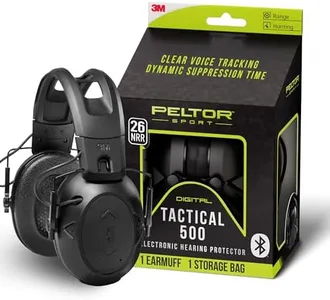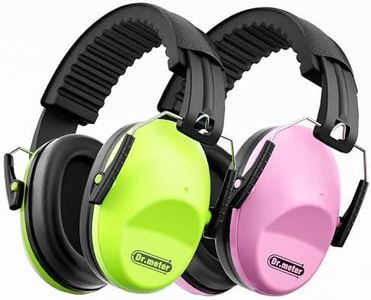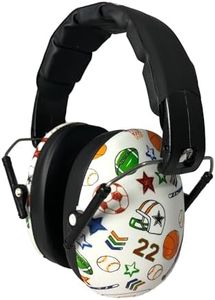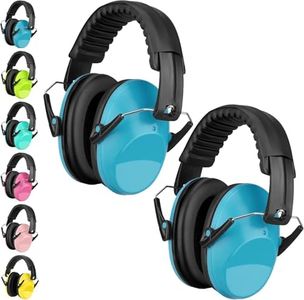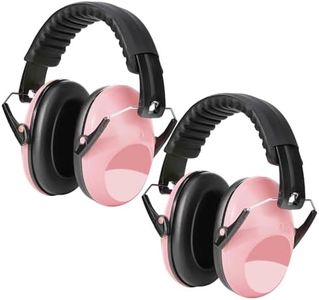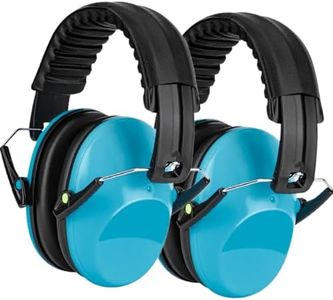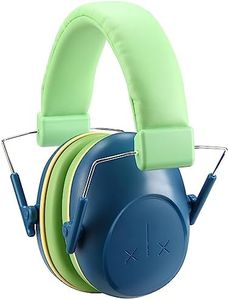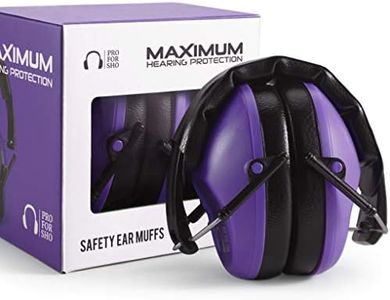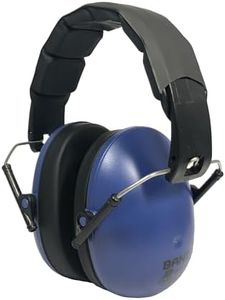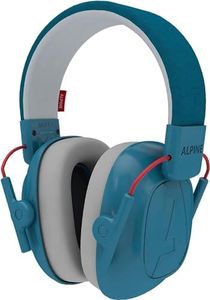We Use CookiesWe use cookies to enhance the security, performance,
functionality and for analytical and promotional activities. By continuing to browse this site you
are agreeing to our privacy policy
10 Best Shooting Earmuffs For Kids
From leading brands and best sellers available on the web.Buying Guide for the Best Shooting Earmuffs For Kids
Choosing shooting earmuffs for kids is important to ensure their hearing is well protected during potentially loud activities, such as shooting ranges or fireworks displays. Kids' ears are more sensitive than adults', and finding earmuffs designed just for them ensures both safety and comfort. When you're selecting earmuffs, you'll want to consider the most important features to look for, what each one means, and how to decide which is best for your child's needs.Noise Reduction Rating (NRR)Noise Reduction Rating, or NRR, measures how much noise the earmuffs can block out, given in decibels (dB). The higher the NRR, the more noise is reduced, which is especially important for very loud environments. For light sounds, a lower NRR (around 15-20 dB) might suffice, but for shooting or fireworks, a higher NRR (22-30 dB or above) is safer. Always look for earmuffs with an NRR suitable for the noise your child will be exposed to; louder environments require higher ratings.
Fit and ComfortComfort is crucial because kids won’t wear uncomfortable earmuffs for long. Earmuffs should have adjustable bands and well-padded ear cups to fit various head sizes and shapes securely but gently. Pay attention to features like lightweight construction and soft cushioning—these make a big difference for smaller, sensitive heads. To pick the right level of comfort, consider how long your child will need to wear them and if they'll be worn with other headgear (like hats or glasses).
Size and AdjustabilityChildren’s heads are smaller than adults', so earmuffs must be designed for a child’s size. Adjustable headbands allow the earmuffs to grow with your child or fit multiple kids in your family. Look for earmuffs that specify they are for kids or youth, and make sure they can be resized to get a snug but comfortable fit; avoid adult-sized models, which may be too loose and less effective.
Weight and PortabilityLightweight earmuffs are easier and more comfortable for kids to wear, especially for extended periods. Heavier earmuffs might provide slightly better protection in some cases, but for young children, comfort usually wins out. Foldable or compact designs are easier to carry, store, and pack for outings, making them appealing for active families or for situations where space is at a premium.
Durability and MaterialsKids can be tough on equipment, so earmuffs should be made from strong and flexible materials, like durable plastics and reinforced bands. Soft yet sturdy padding can withstand repeated use and mishandling. Look for materials that are easy to wipe clean, since hygiene is important for items kids wear frequently. If your child is especially active or will use the earmuffs often, prioritize sturdier construction.
Style and ColorWhile not related to performance, fun or attractive colors and designs may encourage kids to wear their earmuffs willingly. Some children might prefer bright or pastel colors, camouflage, or designs with popular characters. For safety in outdoor settings, consider highly visible colors. Let your child help choose the style—they'll be more likely to use what they like!


